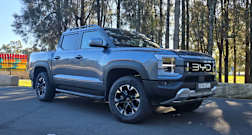It’s a horrible feeling - you turn the key on your car and nothing happens.
The most common cause of a car failing to start is a flat battery and the easiest way to get it going is, typically, to find a friend who can give you a jump start. But what happens if you have a dead battery and no other car to help you jump start or any jumper cables?
Well, in that instance your best bet is to try and bump start your car. In this article we’ll teach you how to push start a car to get it going when the battery is dead.
It’s worth noting there are a few different names for the same technique, some call it a bump start, others a clutch start or you can call it a push start or roll start. But whatever you call it we’re going to explain how to do it.
Can a bump start damage your car?
If you need to clutch start your car it’s not likely to cause any further damage to your battery. However, the technique to push start a car can be dangerous if you don’t take proper precautions, so you might damage your car if you’re not careful. Worse, you could hurt yourself or others if you don’t follow the procedures correctly.
Can a car battery be too dead to jump start?
Yes, a battery can become so badly damaged, primarily due to inactivity if you leave your car for too long, that you can no longer jump start it via another car or battery booster. In this case you’ll need to replace the battery to get the car going again.
.jpg)
Can you push start an automatic car?
Unfortunately, it’s not generally possible to bump start an automatic car. You need a manual transmission so you can select a gear once the car has momentum. An automatic needs a pump to build transmission fluid pressure, so without the engine starting it cannot build that pressure so you won’t be able to select a gear.
.jpg)
How to jump start a car:
1. Find a safe area with enough space to push the car. You’ll need a reasonable amount of room to build up some speed and then get the car going and keep driving to recharge the battery. Ideally, you’d find a gentle downhill area, as that will allow you to build more speed with less effort and without the need for help.
2. Turn on the ignition but turn-off auxiliaries. Have the key turned to ‘on’ not all the way to the starting position. Also, turn off anything that could drain the battery, such as the sound system and air-conditioning.
3. If you’re the driver, select a gear and keep the clutch depressed. Depending on your car and the amount of space you have you may want to start in first or second gear. If you can get enough speed up by pushing, starting in second will give you a smoother start.
4. If you aren’t parked on a hill, you’ll need to get a friend to push the car to a reasonable speed. You’ll need to build up enough momentum to get the engine to turn over - around 10-15km/h.
5. Once you’re up to speed, you need to quickly ‘pop’ the clutch and the engine should start. If it doesn’t start there are a number of factors to consider but the two most important are the speed of the car and how quickly you release the clutch. So if you don’t get started the first time, it’s worth trying again.
.jpg)
The basic push start techniques don’t differ from one vehicle to the other, so regardless of what you need to get going these steps should work.
Obvious differences will be the size of the car you’re trying to bump start, so if it’s a bigger car you may require more help to push and more space to build the required speed.
If you find yourself on an uphill road, you will need to either turn the car around by pushing it or, if there is enough safe space you can actually try doing it in reverse - but obviously that is a trickier scenario.







.jpg)

.jpg)
.jpg)

.jpg)
.jpg)
